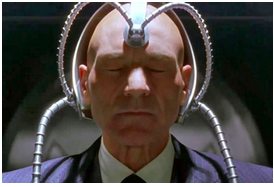Master Class: How to boost productivity through journaling – with UJ Ramdas

UJ Ramdas is the co-founder at Intelligent Change and the author of The Five Minute Journal which teaches you how to apply the principles of positive psychology.
UJ Ramdas was stuck in a system.
“In India, very similar to China and Russia, the academics are ridiculously rigorous,” says UJ, founder of Intelligent Change and author of The Five Minute Journal. “And academics are the only thing that’s prized, nothing else counts for anything.”
But UJ was an entrepreneur at heart. He wanted to go his own way.
“I studied my ass off so I could get to Canada, about six or seven months later,” he says. “It was painful because I wanted to get out of that system and create my own system where I could thrive.”
The way he got through it and reached his goal: Journaling.
“Journaling helps you stay on track, to ensure you follow through,” he says.
It’s also the tool he used to start Intelligent Change and write The Five Minute Journal.
In his Mixergy course, UJ shows you specific journaling approaches that get specific results. Here are three highlights from the course.
1. Attack Problems With a Frickin’ Laser Beam
 Lots of people get a great idea while they’re in the shower.
Lots of people get a great idea while they’re in the shower.
And that’s nice when it happens, but what if you need an idea for a very specific problem? And what if you need it now?
(It’s not like you can spend all day in the shower…)
“I had an idea for a website a week ago, in restorative yoga,” says UJ. “But I didn’t know that idea was going to come. I had no idea, I wasn’t looking for it. How do I find the ideas I’m looking for?”
So how do you do that?
Zero in on the problem
Use a problem-solving journal to flex your idea muscle.
“Destroy the problem with lots and lots and lots of ideas,” he says.
To to that, UJ spends the first 10 minutes refining the problem he wants to solve.
“Underneath that, you just write ideas,” says UJ. “There is no filter on the ideas. What matters is you’re allowing your ideas to flow freely from your brain to your paper.”
UJ says that eventually, you’ll hit on something. “Direct your conscious attention and awareness almost like a laser beam on this thing, and do not move until you see something,” he says.
2. Map Your Own Mind
 When you have to put together a course or write content or do a podcast, where do you even start?
When you have to put together a course or write content or do a podcast, where do you even start?
“Before I started this [journal technique], I had no idea what I was going to talk about,” says UJ.
After all, you have a ton of information to organize, but it’s all in your head. Somehow, you have to get all of that down on paper, then organize it into something that makes sense to other humans.
And getting started always seems to be the hardest part…
So where do you start?
Connect your ideas
Write out a mind map.
“Whenever you have a large amount of material that you need to organize in some way, use mind maps,” says UJ. “They’re also typically how the mind works–in associations. Lots of lines connecting this topic to this topic to this topic.”
To do that, write down anything that might be valuable or useful. Then, start making connections. “It allows you to look at it visually and associate relationships between things that you might not have connected before.”
Find out which app UJ uses to create his mind maps in the full course.
3. Keep Moving Forward (And Track It)
 Are you making progress, or are you just kidding yourself?
Are you making progress, or are you just kidding yourself?
“Everybody would like to think they’re making progress,” says UJ. “Somebody who’s 35, 36, 37 would like to think every year of their life was spent in progress, yet age does not correlate with wisdom. So you could be 37 and not have made progress at all.”
And that’s a scary thought for UJ. “My biggest fear is not making progress,” he says.
So how can a journal help you make real progress?
Write down the data
Pick one metric and track it in a journal.
“Track one metric over time consistently, and you’re going to get better,” says UJ. “If you’re working out without metrics, for example, you’re compromising results.”
UJ points to a case study in Tim Ferriss’ book. “All this guy did was weigh himself every day,” he says. “He plotted this on Excel, and he had a target weight where there was a red line and he would never allow himself to go over the red line.”
The guy didn’t make any drastic changes to his diet or workout. “In about seven months, he was some 20-25 pounds lighter,” says UJ. “Just the act of measuring himself every day over time, and keeping track of that number, led to results that he wouldn’t even have gotten if he didn’t do that.”
Written by April Dykman.
Find out how UJ also uses “bets” to create new habits quickly in the full course.
